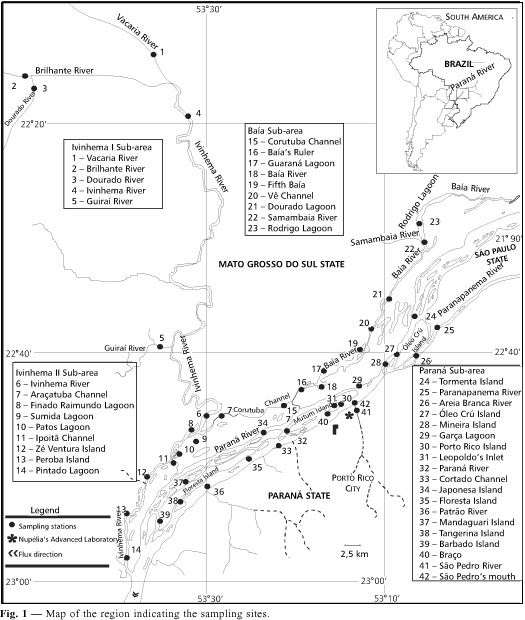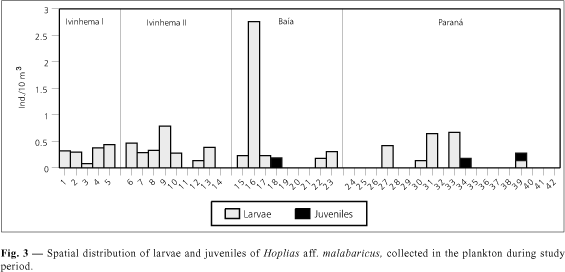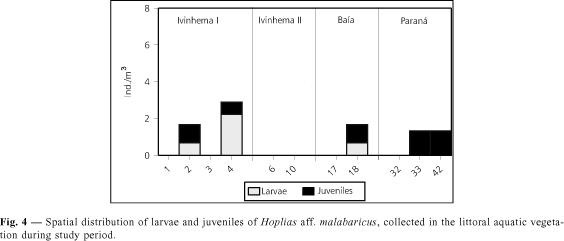Spatial and temporal distribution of larvae and juveniles of trahira, Hoplias aff. malabaricus (Erythrinidae), and their relationship with environmental parameters in the Upper Paraná River floodplain were analyzed. Sampling of larvae and juveniles of H. aff. malabaricus has been conducted during the period from November 1991 through February 1995, with 42 sampling stations distributed in four sub-areas: Ivinhema I, Ivinhema II, Baía, and Paraná. During the same period, data were obtained for water temperature, dissolved oxygen, pH, electrical conductivity, river level, precipitation index, and photoperiod. The largest catches of larvae were in the Ivinhema I sub-area (47.06%), and of juveniles in the Paraná sub-area (54.55%). Larvae and juveniles were caught from October to February. Larvae were mainly collected at night and in all types of environments sampled (lotic, semi-lotic, and lentic). Principal Component Analysis of the environmental parameters and larval density showed that the largest catches were obtained in dry season months, with low values for temperature, electrical conductivity, river level, and photoperiod, and with high concentrations of dissolved oxygen and pH. This reproductive strategy may minimizes predation and maximizes food utilization, as it enables the fish to reach advanced developmental stages, while most other species are spawning.
Upper Paraná River; Hoplias aff. malabaricus; larvae; juveniles; floodplain











